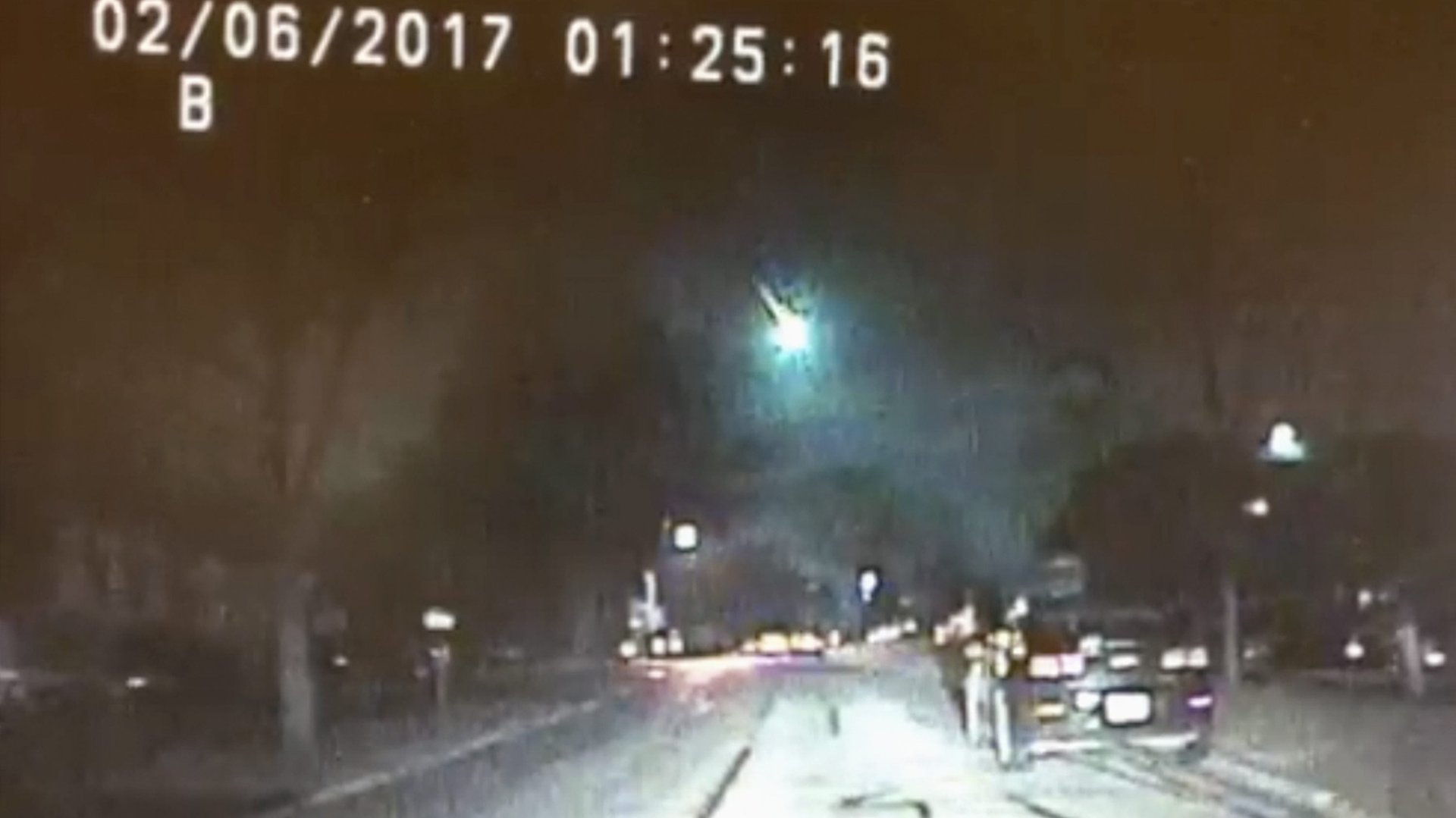Incredible amateur videos show the moment a meteor became a fireball over Chicago
A flashing green fireball whizzed through the sky near the midwest of the US early today. Footage from several police and security cameras captured a striking ball of light falling from the sky at about 7:24AM GMT (1:24AM CT), which disappeared after a final blast. It turns out to be a meteor, according to the American Meteor Society.


A flashing green fireball whizzed through the sky near the midwest of the US early today. Footage from several police and security cameras captured a striking ball of light falling from the sky at about 7:24AM GMT (1:24AM CT), which disappeared after a final blast. It turns out to be a meteor, according to the American Meteor Society.
The AMS has received 222 eyewitness reports of the fireball, sighted primarily in Illinois and Wisconsin, but also in Minnesota, Indiana, Ohio, Michigan, Iowa, Kansas, Missouri, New York, and Ontario, Canada. The meteor seems to have travelled from the southwest to the northeast of the mid west region in an estimated trajectory that the society plotted from the reports. It might have ended its flight on Lake Michigan, between Sheboygan and Manitowoc, Wisconsin.
Plenty of witnesses and government agencies captured the event on tape and posted it on social media, including the Lisle Police Department in Illinois, National Weather Services of Chicago, of Milwaukee, and the Space Science and Engineering Center of University of Wisconsin-Madison.
Meteors light up and become visible as they enter earth’s atmosphere at a high speed and compress air in front of them. The compressed gas heats up enough to melt the front side of the meteor. This releases chemicals that emit bright light, turning meteors into shooting stars. Their brightness is measured in comparison to that of other stars in the sky, in terms of magnitude. According to AMS, the sun has a magnitude of about -26, the moon -12, and the faintest star visible to the naked-eye would be at +6. Although thousands of meteors fall onto the earth everyday, the vast majority are left unseen by human beings as they fall into oceans or on uninhabited areas, or are masked by strong daylight. Those happening late at night might also be missed, as fewer people are out to witness them.
Even fewer meteors produce a meteorite fall by leaving physical material on earth’s surface. In order to make a landing before entirely burning up, a meteor has to be large enough, while entering earth’s atmosphere at a relatively low speed. The size of a meteor could be indicated by how bright it is, and one that could turn into a meteorite fall would have a brightness magnitude of up to -8 or -10 (approximately equivalent to the brightness of the first quarter moon or the full moon). It must also be originated from an asteroid, therefore made up of metal and rocky materials (instead of a comet, which is mostly ice, rock and hydrocarbons).